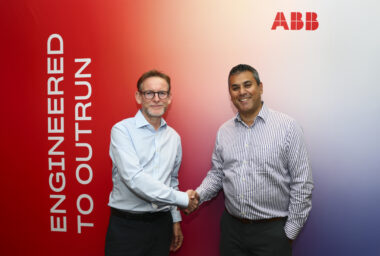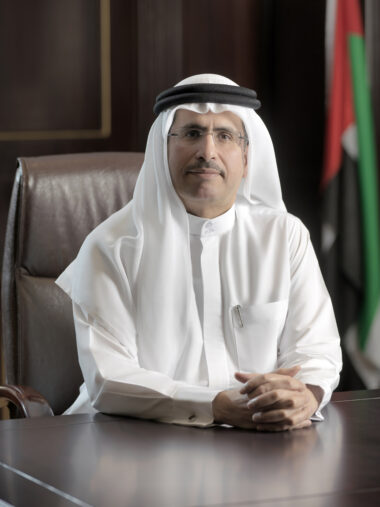As more houses and buildings in Australia install solar panels, community batteries are one way that neighbourhoods can reduce overall energy usage, and households can reduce their energy bills.
“Community batteries provide benefits for the energy user, the grid operator, and the energy retailer, so it’s likely that we’ll see more installed as Australia ramps up its transition to renewable energy,” says Steve Bell, Managing Director, Clean Tech Controls.
Clean Tech Controls is an Australian manufacturer of switchboards and associated technology, with particular expertise in renewable energy, including complex installations that connect to the grid.
The Australian PV Institute reports that, “As of 31 Dec 2023, there are over 3.69 million PV (photovoltaic) installations in Australia, with a combined capacity of over 34.2 gigawatts.”
According to data from SunWiz, which tracks this market, Australia has been the top global leader in rooftop solar PV penetration for a decade or so, with nearly one in three Australian homes (approx. 3.3 million households) today featuring solar panels on top.
“Investing in renewable energy helps drive down the local energy price, supports local industry and local manufacturing, and helps Australia develop a world-class export market for our green power – and community batteries are a part of the solution,” says Steve.
Making better use of solar power
Community batteries are typically installed in residential areas, where they allow people to sell their excess solar back into the grid. Anyone with solar panels and a connection can rent a portion of the battery, allowing them to reap the benefits of that battery, without the upfront costs.
“For people with rooftop solar, they can save power generated during the day in the battery, and access it again at night, instead of drawing on grid power,” explains Steve.
“The price is typically set so that the cost of renting a portion of the battery is lower than what that person would have had to pay on their electricity bill to use the same amount of power from the grid – so it’s a win-win,” he adds.
Community battery advantages
Community batteries allow individuals to simultaneously save money and reduce their carbon footprint, but there are advantages for others, too, says Steve.
“For the DNSP (Distributed Network Service Provider), community batteries help to stabilise the grid by absorbing residential solar during the day and discharging it at night, when demand for energy is often at its highest,” he says.
“Community batteries also allow the energy retailers to participate in the energy market by buying power when it’s cheap, and selling when it’s expensive. They can also trade on FCAS (Frequency Control Ancillary Services) markets to stabilise the grid frequency,” he adds.
FCAS is a process used by the energy market operator to maintain the frequency of the system, by injecting or reducing energy to better manage supply and demand.
The importance of using experienced technology providers
Community battery installations typically have capacities of 200-500 kWh and are made up of three key technologies, the battery, the inverter, and the switchboard. Clean Tech Controls supplies the switchboards to these types of installation across Australia, and says experience is vital in setups with complex controls, communications, and programming requirements.
“There is typically SCADA (supervisory control and data acquisition) communication integrated into the switchboard so that the DNSP can control the batteries from their control room,” explains Steve.
“Since there are lots of controls, logic, and programming requirements, it’s important to select a switchboard provider that has experience integrating solar to the grid, as well as programming and testing RTUs (remote terminal units) to meet the DNSP’s requirements,” he adds.
Clean Tech Controls as a range of switchboard designs that have been tried and tested specifically for heavy duty outdoor use and integration of renewables into the grid. These Australian-manufactured switchboards are compliant to the latest AS/NZS 61439 safety standards.
“Another consideration for community battery switchboards is the need for integrated protection relays. To include these in the switchboard requires experienced programming, as well as the ability to carry out secondary injection testing to verify they are operating correctly and accurately,” says Steve.
Ownership and control
There are a range of different ownership and control options for community batteries, which is why integrated SCADA communication is essential in the switchboard.
“Ownership and control are complicated by the fact that on the east coast and in South Australia, grid owners (DNSPs) are not allowed to buy or sell power – only an energy retailer can do this, and it must be on the National Energy Market (NEM),” explains Steve.
“So the battery can be partly controlled by the DNSP to protect their grid and provide grid services, but they cannot buy and sell the power. Typically, an energy retailer will take on this role whereby they will control and meter the power to calculate the rebate off the end user’s bill,” he adds.
“This setup means that commercial structures can be complicated, and different options are still being explored to find the best financial model for community batteries. It’s possible, for example, for energy retailers to operate on the NEM and provide grid services, such as FCAS services, and to carry out energy arbitrage.”
“In Western Australia, the Wholesale Energy Market (WEM) does not have the same restrictions, making the buying and selling of power from the DNSP much more straightforward.”
“However it’s structured, community batteries can benefit Australia and help our transition to more renewable energy, with benefits to users, grid operators, and energy retailers.”
About us:
Clean Tech Controls’ mission is to support Australia’s transition to clean energy by providing power and control switchboards to integrate renewable energy, EV chargers, microgrids, and other clean energy technologies.
In addition to switchboards, our customers rely on our unrivalled industry experience and know-how to deliver smart and reliable grid connection, protection, power quality analysis, and injection testing solutions.
Clean Tech Controls has a team of highly skilled and innovative engineers and electricians, above a core executive that are all passionate about leveraging the power of clean energy and control systems towards creating a cleaner and more sustainable energy future for Australia.
Our clients, which include industry leading companies, solar retailers, EPCs and solar retailers, maintain Clean Tech Controls’ reputable and trusted position as one of the leading clean energy service providers in the country.
Our support staff are located in Sydney and Melbourne. We’re proud to be a local manufacturer as we produce our switchboards at our Tempe facility.
Contact details:
Jack Mallen-Cooper
PR Consultant
Whyte Public Relations
(02) 9901 4306
[email protected]


